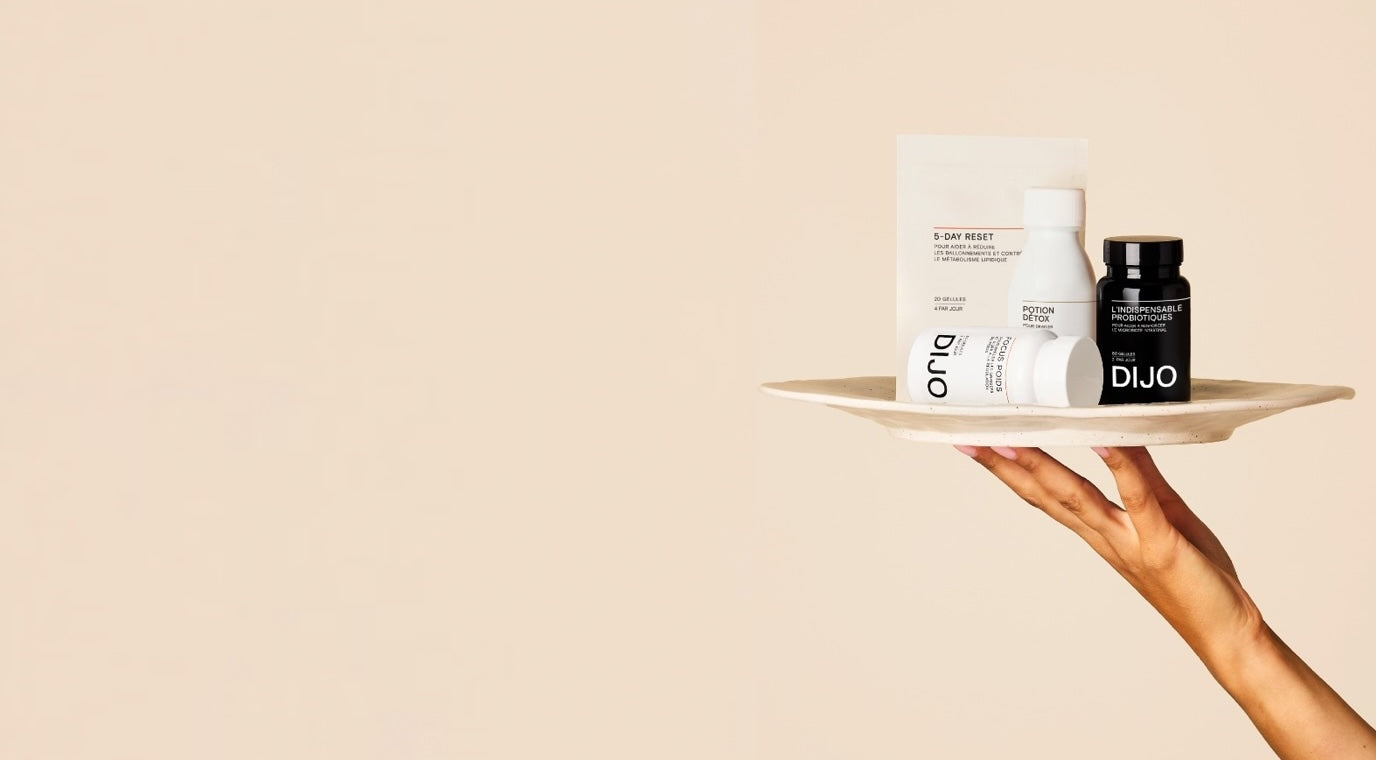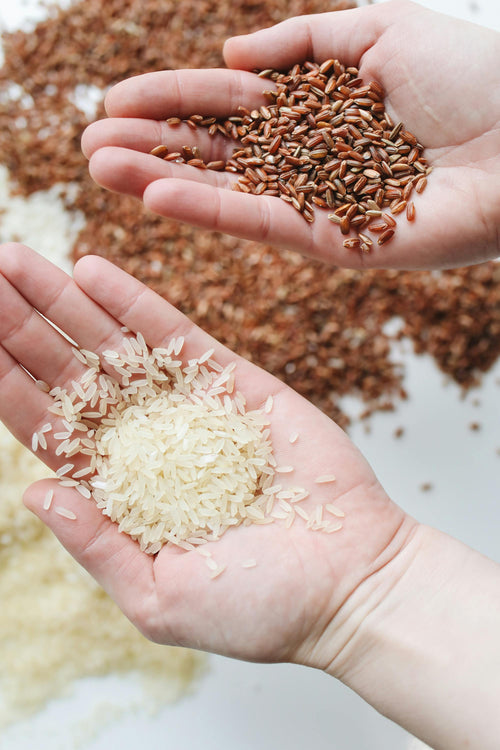What you must remember :
- Probiotics are the good bacteria that make up our intestinal microbiota.
- It is important to favor strains adapted for babies and to provide the body with sufficient probiotics for a good balance of the intestinal microbiota.
- The main strains beneficial for babies are lactobacilli and bifidobacteria
- Taking probiotics is recommended from birth and there are no contraindications to taking them. However, pediatric advice is strongly recommended.
Interests and benefits of probiotics for babies
1 - Definition and role of probiotics in general
Probiotics are good bacteria that support those already present naturally in our intestines , and particularly in our colon, where food ferments.
Generally speaking, consume in sufficient quantity, probiotics act positively at different levels. Their benefits are particularly recognized with regard to digestive health and the immune system .
Probiotics aim to maintain a balance within our intestinal microbiota and thus allow it to be strengthened . Probiotics therefore promote healthy digestion . They reduce digestive disorders (diarrhea, constipation , gas , etc.). These good bacteria also help regulate intestinal transit . They help us break down the foods we eat and absorb the nutrients our bodies need to function.
In terms of the immune system, probiotics will strengthen our body's natural immune defenses by stimulating certain immune cells. They reduce inflammation and help prevent infections. They are real allies in strengthening our body's defense barriers and stopping the growth of bad bacteria.
2 - Benefits of probiotics for babies
Probiotics have several benefits for babies.
They offer all the advantages mentioned above, but also make it possible to act on problems specific to babies.
According to studies, probiotics play a role in health and disease in newborns and infants .
Probiotics support babies' immune systems , which are still immature because they have not yet been exposed to different microbes. Supporting the immune system and modulating the immune response, the early introduction of probiotics also proves beneficial in preventing the development of allergies of all kinds. Likewise, supporting babies' immune systems with probiotics helps prevent the appearance of eczema, a skin disease.
Probiotics improve the digestive well-being of babies by reducing colic, caused by an imbalance in the intestinal microbiota .
They also aim to alleviate constipation , to which babies are prone, by regulating intestinal transit and increasing intestinal absorption of good nutrients.
The Best Probiotic Strains for Babies
The strains most beneficial to babies and most commonly used are bifidobacteria and lactobacilli . Thanks to enzymes, these two strains will be able to ferment the sugars present in breast milk, and use them for their growth and proliferation. Other good bacteria will also use these sugars to multiply and grow.
More specifically, the probiotic strains Lactobacillus rhamnosus and Saccharomyces boulardii have been shown to be effective in reducing the duration of symptoms associated with diarrhea and antibiotic-associated diarrhea.
Lactobacillus rhamnosus is also beneficial for treating colic in infants. This bacteria has the advantage of increasing tolerance to cow's milk protein, thus reducing allergies to it. It reduces eczema in infants.
The Bifidobacterium infantis strain is a strain known for its anti-inflammatory properties. It has demonstrated its effectiveness in reducing intestinal permeability and in the management of diarrhea associated with antibiotics. According to studies, it is also associated with healthy development of the digestive tract in babies born prematurely.
Finally, the latter also acts on the immune system since it allows the maturation of the so-called innate immune response, that is to say the first and fastest to take place.
The Lactobacillus acidophilus strain is also present in babies to help restore the balance of the intestinal flora after diarrhea, an infection or taking antibiotics. Like the strains mentioned above, Lactobacillus acidophilus relieves colic and supports the immune system.
At DIJO, our Children's Probiotics contains the strains Lactobacillus rhamnosus, Lactobacillus acidophilus and Bifidobacterium infantis, for overall well-being in babies. It is the ideal ally for your babies to balance their intestinal flora.
Difference between probiotics for adults and probiotics for babies
1 - The strains
Probiotics for adults and probiotics for children generally do not contain the same strains, and they are not present in the same number. Strains of probiotics for babies are specific to their needs, and chosen in view of their safety and effectiveness.
2 - The concentration of probiotics
The concentration of probiotics is also not the same. In general, probiotics for babies have a lower concentration of bacteria than probiotics for adults because babies have different needs and their digestive systems are still developing. This is what we set out to do at DIJO to best adapt to the comfort of little ones.
|
Child probiotics (for the recommended dosage) |
Essential Probiotics (for the recommended dosage) |
|
3 strains |
8 strains |
|
10 billion CFU |
28 billion CFU |
|
A product suitable for all children from 0 to 18 years old. It is therefore perfectly suitable for babies. |
A product suitable for adults |
Tips for Giving Probiotics to Babies
Although probiotics have no contraindications in babies and are strongly recommended, it is preferable to seek the advice of a specialist, such as a pediatrician, before any supplementation because babies remain fragile and their intestines .
For the administration of our probiotics suitable for babies, we recommend that you open the capsules and put their contents in your baby's bottle, or apply it directly to your nipple or your baby's pacifier, or even 30 minutes before the solid meal, if it is already integrated into your eating habits.
Sources:
[1] Depoorter, L., & Vandenplas, Y. (2021). Probiotics in Pediatrics. A Review and Practical Guide. Nutrients , 13 (7), 2176.
[2] Underwood, MA, German, JB, Lebrilla, CB, & Mills, DA (2014). Bifidobacterium longum subspecies infantis: champion colonizer of the infant gut. Pediatric Research , 77 (1-2), 229-235. https://doi.org/10.1038/pr.2014.156
[3] Kunz, C., Rudloff, S., Baier, W., Klein, N., & Strobel, S. (2000). Oligosaccharides in human milk: structural, functional, and metabolic aspects. Annual review of nutrition , 20 , 699–722. https://doi.org/10.1146/annurev.nutr.20.1.699
[4] Marzet, C., Burgos, F., Compare, M., Gerold, I., Tabacco, O., & Vinderola, G. (2022). Approach to probiotics in pediatrics: the role of Lactobacillus rhamnosus GG. Archivos Argentinos de PediatríA , 120 (1). https://doi.org/10.5546/aap.2022.eng.e1
[5] Pärtty, A., Rautava, S., & Kalliomäki, M. (2018). Probiotics on Pediatric Functional Gastrointestinal Disorders. Nutrients , 10 (12), 1836. https://doi.org/10.3390/nu10121836


















